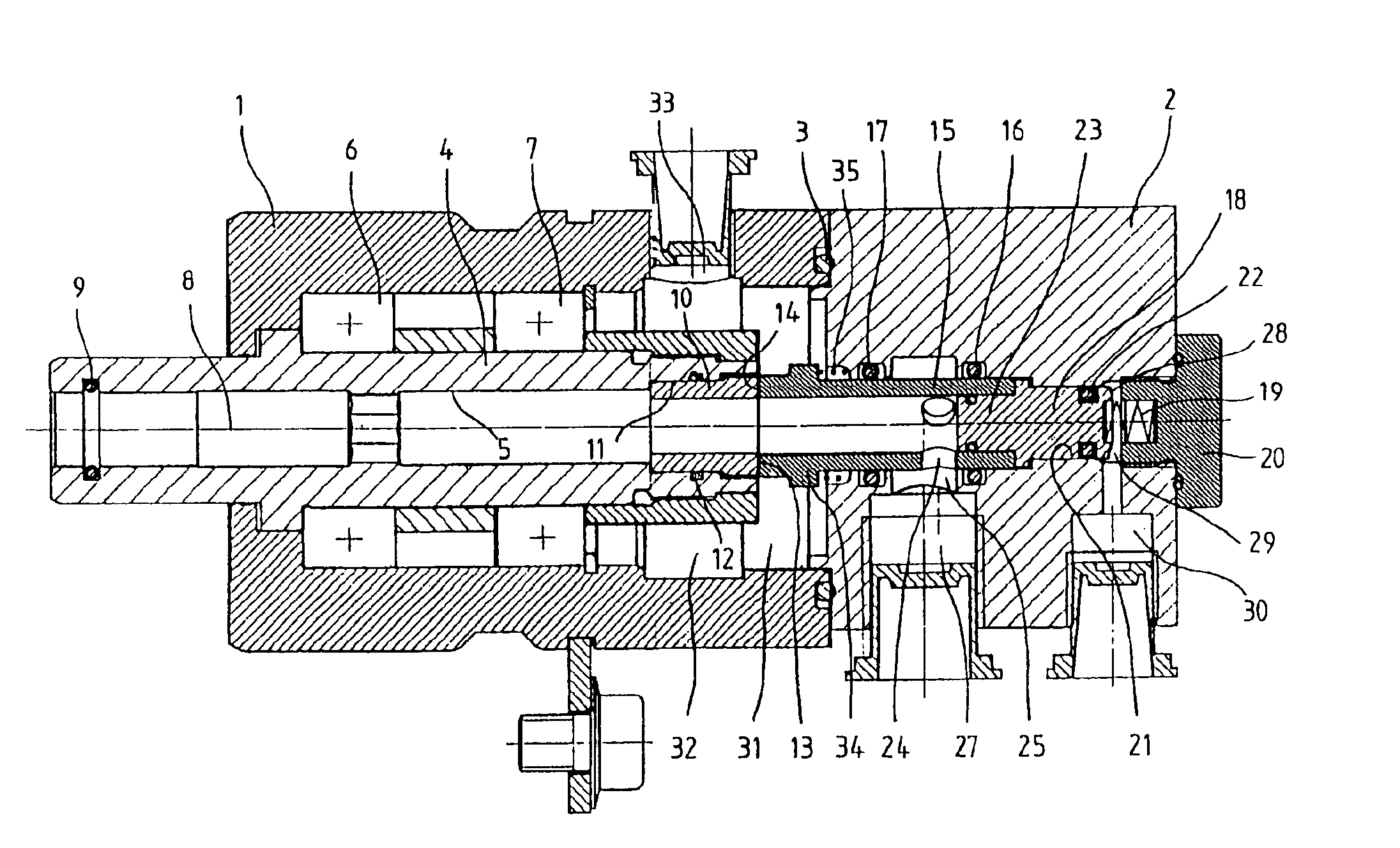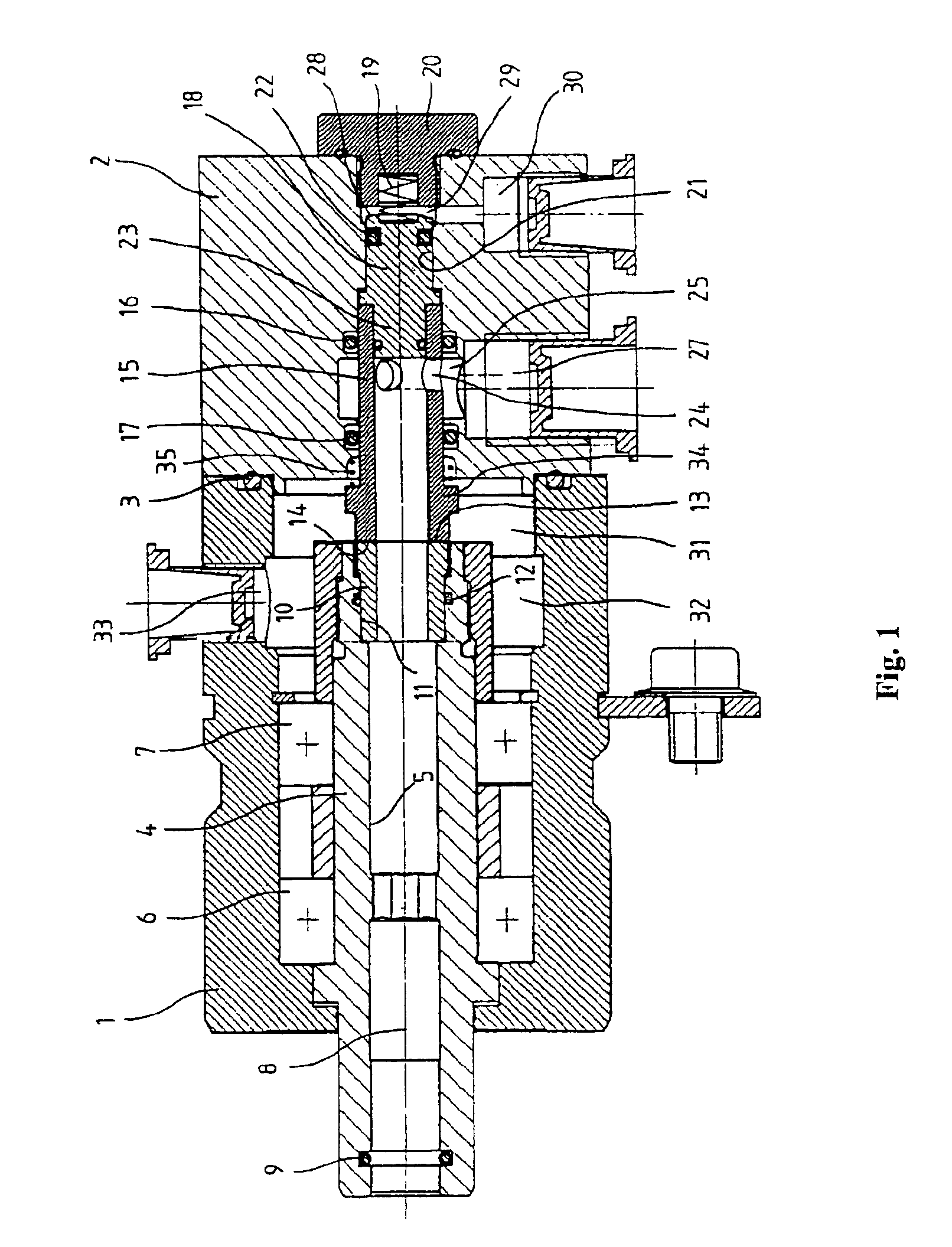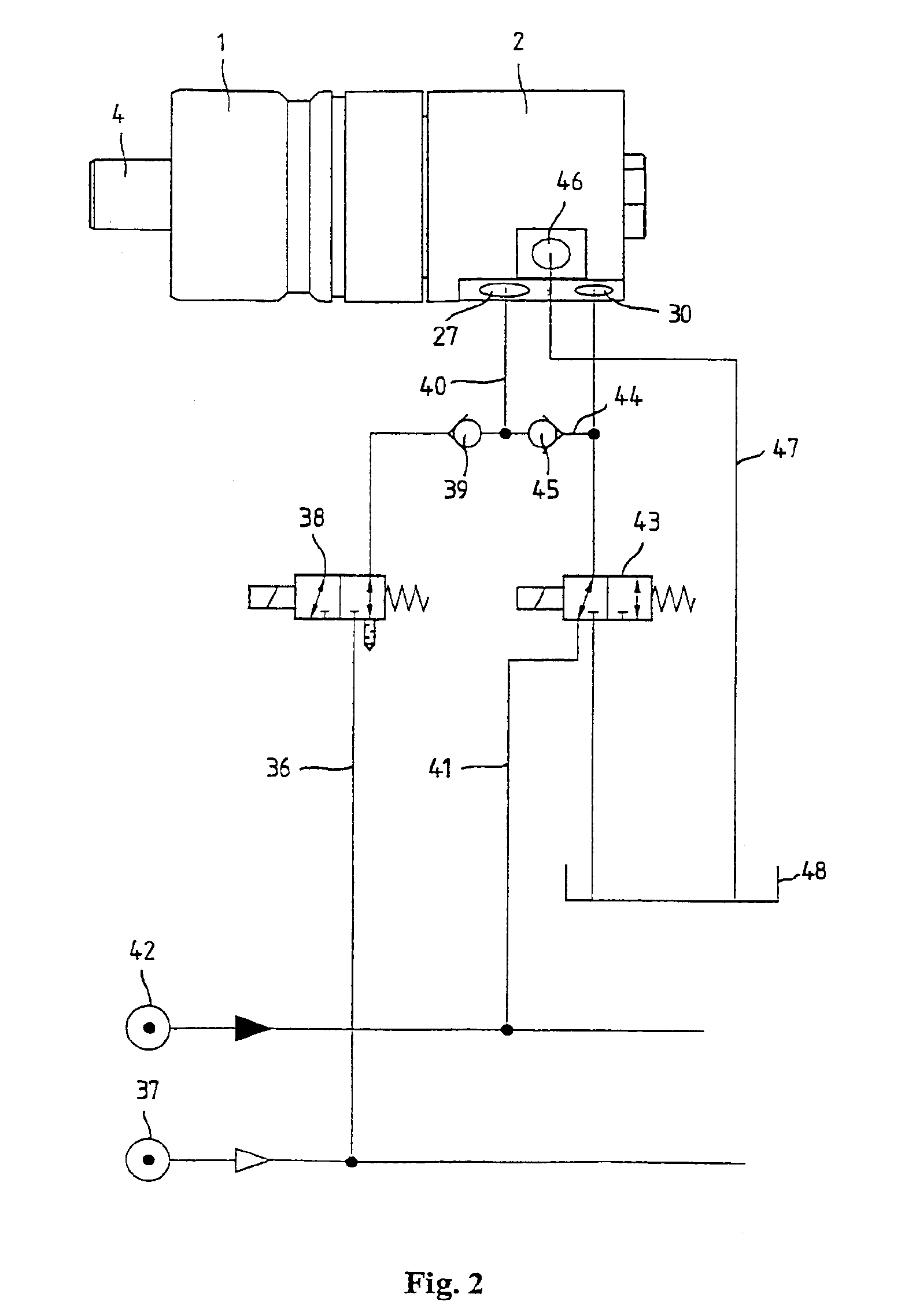Rotary feed-through
a technology of rotary feed-through and rotary cylinder, which is applied in the direction of engine lubrication, instruments, large fixed members, etc., can solve the problems of escape of cooling lubricant, and achieve the effect of optimal sealing
- Summary
- Abstract
- Description
- Claims
- Application Information
AI Technical Summary
Benefits of technology
Problems solved by technology
Method used
Image
Examples
Embodiment Construction
[0014]The rotary feed-through shown in FIG. 1 contains a housing with a front housing part 1 and a rear housing part 2 which is configured as a connecting piece. These parts are connected in a sealed manner to each other by a sealing ring 3. A hollow shaft 4 with a central passage channel 5 is mounted in the front housing part 1 so that the shaft can rotate about a center axis 8 by means of a front and rear rotary bearing 6 and 7, respectively. At the front end of the hollow shaft 4, e.g., a hollow tie rod of a machine tool working spindle is inserted into the passage channel 5 sealed by a sealing ring 9. At the rear end of the hollow shaft 4, there is a first sealing sleeve 10, which is connected rotationally fixed to and which rotates with this shaft. This is inserted into an expanded part 11 of the passage channel 5 at the rear end of the hollow shaft 4 and is sealed by a radial seal 12. The sealing sleeve 10 features a rear end sealing surface 13, which contacts a front end seal...
PUM
| Property | Measurement | Unit |
|---|---|---|
| contact pressure | aaaaa | aaaaa |
| force | aaaaa | aaaaa |
| temperature | aaaaa | aaaaa |
Abstract
Description
Claims
Application Information
 Login to View More
Login to View More - R&D
- Intellectual Property
- Life Sciences
- Materials
- Tech Scout
- Unparalleled Data Quality
- Higher Quality Content
- 60% Fewer Hallucinations
Browse by: Latest US Patents, China's latest patents, Technical Efficacy Thesaurus, Application Domain, Technology Topic, Popular Technical Reports.
© 2025 PatSnap. All rights reserved.Legal|Privacy policy|Modern Slavery Act Transparency Statement|Sitemap|About US| Contact US: help@patsnap.com



